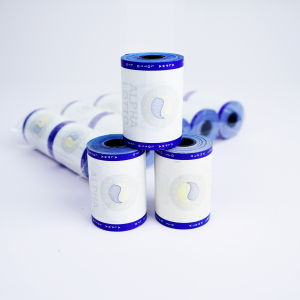Thermal paper printing is a widely used method of printing receipts, tickets, and labels. It uses the heat from a thermal printer to create an image on paper without the need for ink or toner. This technique is becoming increasingly popular due to its convenience, cost-effectiveness, and high-quality results. However, many people want to know whether thermal paper printing is waterproof and oil-proof.
First, it’s important to understand that thermal paper is not inherently waterproof or oil-proof. The coating on thermal paper is usually made from a combination of chemicals such as dyes, developers, and sensitizers. While this coating is effective at producing high-quality images when exposed to heat, it does not necessarily have the same properties as a water- or oil-repellent coating.
That being said, certain types of thermal paper are specifically designed to be water and oil repellent. These specialty thermal papers are coated with an additional layer of chemicals or laminates to provide the required water and oil repellent properties. This makes them ideal for applications where printed materials may come into contact with moisture or oil, such as outdoor labels, kitchen receipts or medical applications.
However, it’s worth noting that not all thermal paper is the same. Standard thermal paper does not have any additional coatings or treatments and is not water or oil resistant. If you require these properties for your thermal printing needs, you must use the appropriate type of thermal paper to ensure the required level of protection.
When evaluating the water and oil resistance of thermal printing, in addition to using special thermal paper, other factors need to be considered. Print quality and image durability also play an important role in thermal paper’s ability to withstand water and oil. High-quality thermal printing produces stronger images that are less likely to smudge or fade when exposed to moisture or oil.
Additionally, it is important to consider the conditions under which the printed material will be used. For example, thermal paper used for outdoor signs or labels needs to withstand different environmental conditions compared to thermal paper used indoors for receipts or tickets. Understanding the specific requirements of your application will help determine the appropriate level of water and oil resistance required for thermal printing.
In summary, while thermal paper printing itself is not waterproof or oil-proof, there are specialty thermal papers that offer these properties. By using the appropriate type of thermal paper and considering print quality and specific application needs, you can ensure that your thermal prints can withstand water and oil. Whether you need water- and oil-resistant thermal paper for outdoor signage, kitchen receipts, or medical applications, choosing the right thermal paper is crucial.
Post time: Dec-12-2023



